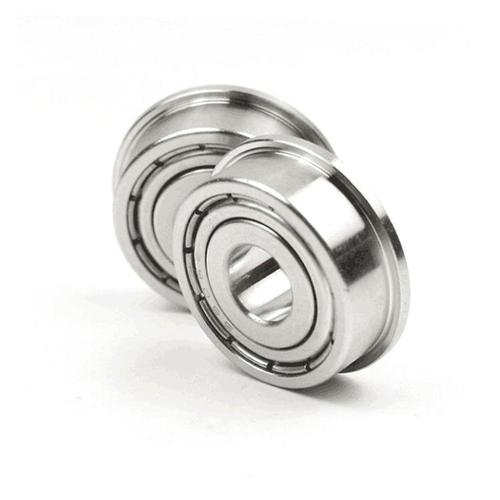High Precision Miniature Bearings for Medical Equipment: Essential Guide for Optimal Performance
High precision miniature bearings are vital components in modern medical equipment, enabling smooth operation and accuracy in devices like surgical robots, dental tools, and imaging systems. Engineered for minimal friction, high-speed performance, and durability, these bearings meet stringent hygiene standards while ensuring reliability in critical healthcare environments.
Table of Contents
1. Medical grade miniature bearing specifications2. Ceramic vs stainless steel medical bearings
3. Sterilization methods for surgical bearings
4. Miniature bearing lubrication for MRI machines
5. Custom-sized bearings for medical devices
1. Medical grade miniature bearing specifications
 Medical grade miniature bearings must comply with ISO 13485 and FDA regulations. These bearings typically feature corrosion-resistant materials like 440C stainless steel or zirconia ceramics, with tolerances as tight as ABEC 7 or higher. Critical parameters include load capacity (2-15N radial load), noise levels (<25dB), and temperature resistance (-60°C to 300°C). Manufacturers often use vacuum degreasing processes to eliminate particulate contamination. Recent advancements incorporate hybrid designs with polymer retainers to reduce MRI interference while maintaining 0.002mm runout accuracy for precision surgical tools.
Medical grade miniature bearings must comply with ISO 13485 and FDA regulations. These bearings typically feature corrosion-resistant materials like 440C stainless steel or zirconia ceramics, with tolerances as tight as ABEC 7 or higher. Critical parameters include load capacity (2-15N radial load), noise levels (<25dB), and temperature resistance (-60°C to 300°C). Manufacturers often use vacuum degreasing processes to eliminate particulate contamination. Recent advancements incorporate hybrid designs with polymer retainers to reduce MRI interference while maintaining 0.002mm runout accuracy for precision surgical tools.
2. Ceramic vs stainless steel medical bearings
Ceramic bearings (Si3N4/ZrO2) offer superior corrosion resistance in autoclave environments compared to traditional 440C stainless steel. While steel bearings provide higher load capacity (up to 30% greater dynamic load rating), full-ceramic variants reduce eddy currents in MRI machines by 92%. Hybrid designs with steel races and ceramic balls balance cost and performance, achieving 1.5 million RPM capabilities in dental handpieces. Surface roughness below 0.05μm Ra is critical for both types to prevent bacterial adhesion, with ceramic options demonstrating 40% lower friction coefficients in cryogenic applications.
3. Sterilization methods for surgical bearings
Medical bearings undergo multiple sterilization cycles using autoclaves (134°C steam), gamma radiation (25-50 kGy), or hydrogen peroxide plasma. Advanced sealing solutions with FFKM elastomers maintain integrity through 500 sterilization cycles. Manufacturers now implement diamond-like carbon (DLC) coatings to enhance chemical resistance, showing 78% less material degradation after repeated EtO exposure. Critical design considerations include thermal expansion compatibility between bearing components and sterilization-induced stress relief in polymer cages.
4. Miniature bearing lubrication for MRI machines
MRI-compatible bearings require non-conductive, non-magnetic lubricants like PFPE-based greases (operating range -80°C to 200°C) or dry film lubricants (MoS2/WS2). Grease quantities are precisely controlled (0.05-0.2g per bearing) to prevent outgassing in vacuum environments. Recent developments include bio-inert perfluoropolyether lubricants that withstand 10,000 hours of continuous operation in CT scanner gantries. Lubrication protocols must account for centrifugal forces at 50,000 RPM while maintaining torque consistency below 0.5mN·m.
5. Custom-sized bearings for medical devices
Custom medical bearings address unique dimensional requirements from 1mm ID to 12mm OD, with specialized configurations like flanged (up to 15mm flange diameter) or shielded designs. Manufacturers employ micro-grinding techniques to achieve ±0.001mm dimensional accuracy. Case studies show 0.3mm thin-section bearings enabling 30% smaller endoscopic cameras. Prototyping services now utilize 5-axis CNC grinding machines to deliver sample batches within 72 hours, supporting rapid development of robotic surgery arms and insulin pump mechanisms.
From sterilization resilience to MRI compatibility, these five critical aspects demonstrate why specialized miniature bearings are indispensable in medical technology. Whether optimizing bearing materials for chemical resistance or engineering custom sizes for next-gen surgical robots, each specification directly impacts device reliability and patient outcomes. Understanding these factors empowers medical engineers to select bearings that meet both technical requirements and regulatory standards.
High precision miniature bearings form the backbone of modern medical equipment, combining microscopic accuracy with macroscopic reliability. By addressing material science, sterilization needs, and application-specific designs, manufacturers continue to push the boundaries of medical technology. Selecting the right bearing solution ensures optimal performance across diverse healthcare applications while maintaining strict compliance with global medical standards.




 13869596835
13869596835